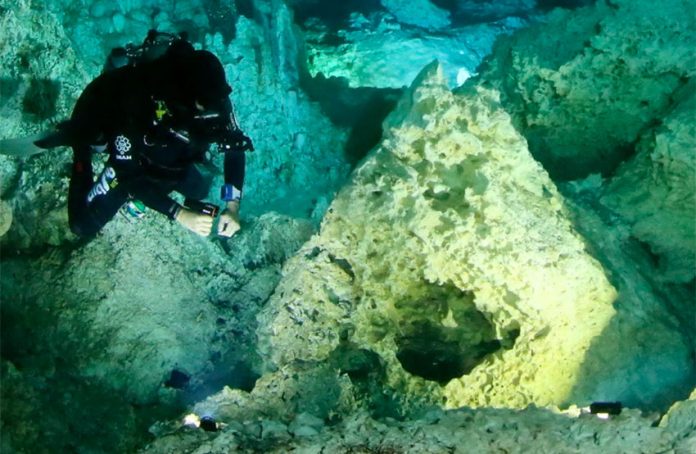The first settlers of the Yucatán Peninsula built bonfires 10,000 years ago in a cave now flooded with water, studies have confirmed.
Charcoal samples from 14 prehistoric bonfires removed from the Ancestors Chamber of the Aktun Ha cenote, or natural sinkhole, in Tulum, Quintana Roo, in 2017 and 2018 were analyzed by scientists from the National Autonomous University (UNAM).
They used a range of different methods including controlled heating experiments, nuclear magnetic resonance spectroscopy and carbon dating.
The scientists determined that the bonfires were lit between 10,250 and 10,750 years ago. Corresponding to the early Holcene period – the current geological epoch which began more than 11,000 years ago after the last glacial period – the charcoal remnants of the fires are the oldest ever discovered in a Yucatán Peninsula cenote.
The scientists determined that the fires reached temperatures as high as 600 C. They ruled out any possibility that water swept the charcoal remains into the cenote cave from elsewhere.

Hunter-gatherers who lived on the Yucatán Peninsula more than 10 millennia ago may have used the Ancestors Chamber as a temporary shelter or for ritual purposes. The bonfires were likely used for both warmth and cooking.
Divers have also found stone artifacts in the cave that appear to have been used as tools such as hammers and scrapers.
Luis Alberto Martos López, one of the authors of an article about the charcoal sample analysis that was published by the journal Geoarchaeology in late April, said that the findings are helping him and his fellow scientists to “reconstruct” the history of fire in the Americas. That history, he added, is of “great importance for the study of evolution and human migration.”
Martos explained that the cave where the charcoal remnants were found was accessed in prehistoric times by a narrow five-meter-long tunnel whose entrance was hidden by a mound of rocks. Early settlers would have had to crawl through it to reach the cave, Martos said.
Measuring about 20 square meters with a height of five to six meters, the cave not only offered shelter for the first yucatecos but also fresh water as there was a natural well at its rear. Before it was flooded with water, it was well ventilated, allowing the bonfire smoke to escape.
The Aktun Ha cenote is now partially open to the public as a tourist attraction and swimming hole but there is no access to the Ancestors Chamber.
Aktun Ha is colloquially known as the “Car Wash” cenote because prior to being designated a heritage site, local taxi drivers commonly took advantage of its location next to the Tulum-Cobá highway to get water to wash their cars.
It is located about nine kilometers from the town of Tulum on community-owned land.
Mexico News Daily
